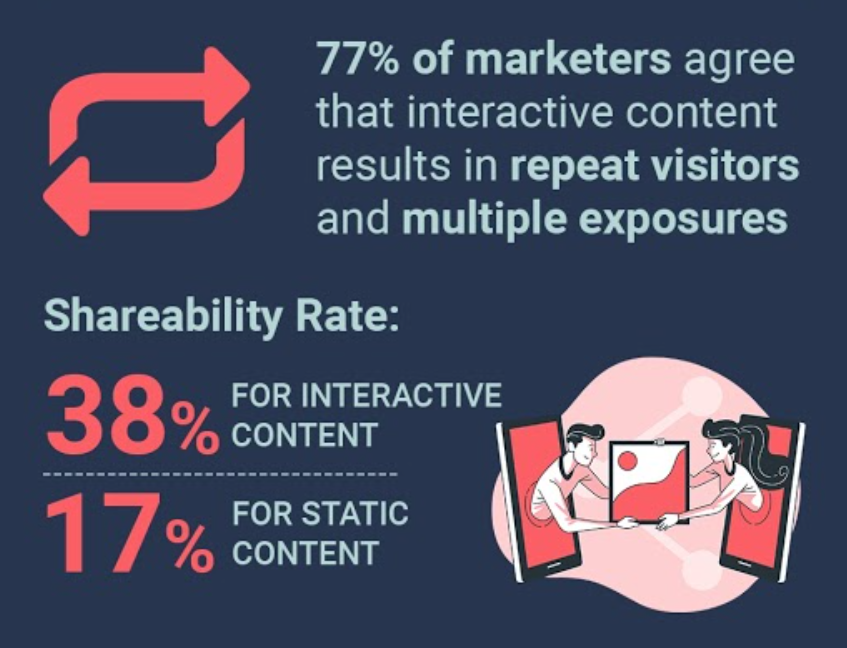In the digital age, churches are embracing technology to build deeper connections with their communities through interactive websites. These online platforms offer more than just service times and contact information; they create dynamic spaces for engagement, education, and community building.
From live-streamed sermons and virtual prayer rooms to interactive Bible studies and online giving, these websites cater to modern worshippers’ needs, making faith more accessible and engaging. By harnessing the power of interactivity, churches are not only reaching their members more effectively but also extending their spiritual support to a global audience, fostering a vibrant and connected faith community.
So how can you make your church website interactive? In this article, we cover everything you need to know, as well as our list of the top 5 trends to follow for interactive church websites and a few example websites for you to get inspired by.
Ready to jump in? Let’s go.
Estimated reading time: 11 minutes
Table of contents
What is an “Interactive Church Website”?

What is an interactive church website, really? If you have been a part of or have known a little about the church web industry for a while now you will have heard the words “interactive church website” a time or two for sure. Let’s learn more.
The Past
When church websites were born on the internet they all started out like very static brochures or were postcard-like pages. They just gave the user who came to the website the information the organization felt that user needed to have. But when did an interactive church website become important?
Well after a couple years, the need for a church website to go beyond just informational was realized by ministry leaders who wanted to spread their church’s mission. The need for something more engaging to a first time visitor on a church’s website was realized so that visitor would want do more than just browse the site like: show up at a service, or respond some sort of other way with a phone call/email to the church etc. For a return visitor to the site, the need was realized for a more interactive church website so that the user wanted to continue coming back to the site using it more as a resource because it was a fun or memorable experience.
We started seeing things like: online sermons that could be listened to or downloaded by a user, church calendars of various kinds, prayer requests forms, and more. Out of this desire for a more interactive church website also came more moving parts like: flash graphics or flash intros, videos, photo galleries, etc. All of these things led people to want to respond in some way, do more, and we saw that people did start reaching out to the churches more and more that had these types of “interactive” elements on their websites. I know for the web development company I worked with we would hear more testimonials or feedback of success from our clients with more interactive church websites on how someone responded or took that next step they wanted the web visitor to take!
The Present
Some of these interactive type elements I mentioned above are still relevant on church websites but the times have changed and effective strategy on church websites looks a bit different now. Actually, some of those elements I mentioned should not have even been considered interactive but most people viewed them that way though. We were only scratching surface of what made for a truly interactive church website and we were actually confused about what an interactive church website really was.
I want to give you some tips of what are key interactive elements that actually make for an effective interactive church website these days but let’s first look at the definition of the word interactive to get a better perspective on things as we move forward. “Of two people or things influencing or having an effect on each other. Allowing a two-way flow of information between a computer a computer-user;responding to a user’s input. Its also defined as people acting reciprocally.” So knowing this, it is all about reciprocation and communication with a user on your site.
According to Outgrow, 77% of marketers agree that interactive content results in repeat visitors and multiple exposures. Not to mention the fact that the shareability rate for interactive content is 38% rather than the 17% for static content.

It’s clear that interactivity online is important. So how should you go about making your website more interactive?
Top 5 Trends for Interactive Websites

Now that we know all there is to know about interactive church websites, let’s jump into our list of the top trends to flow. Here are 5 key tips that will give your church a truly interactive church website. We believe each are critical to have the best results online.
1. Online Sermons
This interactive element has stood the test of time for several reasons. Obviously, the preaching of the gospel will be relevant for a church to do until the Lord comes back but for a church this is always going to be a key thing to do online. Whether or not it is a member who wants to go to church online to listen or watch a message they missed, or someone wanting to view a live service; this is a key interactive element to have. As a pastor you obviously want people to hear the gospel being preached and allow them to experience your service a bit to get a feel, but giving people a way to respond to that message you taught is the main thing.
Your goal should be to connect through your online church services which would hopefully give your user a desire to visit your church. Allow them to comment on that message from the site, share it on whatever social media platform they wish to (isn’t this also a great way to encourage members to evangelize too?), or download the message if they wish. If you are presenting online messages with quality they will more than likely just watch or listen to it on their device right there.
2. Online Giving
This is a biggie now. I cannot think of a good reason that a church would not want this available to their members. It is extremely secure. Most banking is being done online now and you would be making it more convenient for someone to give any time(not just during the offering time at church). It allows people more control over their giving by tracking it better, designating offerings, and more.
The current and next generation rarely write checks. By the way, you get to really communicate the heart behind what giving is 24/7 on your website. That is far more difficult to do from the pulpit every Sunday.
3. Social Media Integration with Blogs
Social Media in itself is interaction. Every church should utilize it mainly for church communication. However, it is critical to integrate it with your church website for several reasons. When most people use google to find a church or find your church they will go to your church website first for information. This is your opportunity to allow them to like you on facebook, see your tweets, or connect with you on Instagram.
There are neat plugins that allow your posts from social media to automatically push to your website too. This goes a long way to show how relevant and connected you are! You are giving people current content that they can respond to by connecting with you on social media and responding to what you are saying there as well.
A blog should be a non-negotiable interactive element now. As a pastor, don’t you have something to say every other day of the week and not just Sunday to your members or people looking for a church? Do you have topics you want to discuss within ministry life, current events, or things happening in the world? A blog is the best place to do it and the more blogging you do the more people will see your blog, subscribe to it, make comments on it, and share it with others. As an inside tip, google likes blogs a lot and you will become more visible online when people are looking for churches. You want your church to be found, right?
4. Forms
Forms are still very important and make for a more interactive church website. Prayer request forms were the first type of form frequently used on church sites and are still great to have. Allowing people to fill out a form before registering for an event etc. is a key. It provides connivence for the user and information for you. Really some of the best use of forms on your website are ones just allowing people to ask more information about your church, or what to expect before they come.
People have more questions these days and are more apprehensive to just jump in or visit. Invite them to fill out a form to “know more” or ask any questions they may have is a good online practice. The important thing here is to also have compelling content and a good call to action around the form so they feel more compelled to respond.
Examples of Interactive Church Websites

To finish up here, let’s explore some of the best examples of interactive church websites. While we don’t suggest copying any of these one-for-one, we do encourage you to be inspired by their designs! Look for the elements we’ve been discussing and how they implement them. These are the best church websites with interactive elements we could find.
Let’s jump in.
Elevation Church
The Elevation Church website is an awesome example of not just interactivity but also sleek design. It is cool and fresh and modern, while also being very useful. As you scroll through it, check out the interactive elements that make it appealing and effective.
For example, the very first thing you see when you open the website is “Let’s tailor your experience” with a number of buttons to click depending on your relationship with the church (visitor, member, and so on). If that’s not interactive, I don’t know what is!
Village Church
The Village Church website has a different look, but it’s no less effective. Look how they advertise their online services! Scroll a little lower, and you’ll see four big buttons for all the different ways you can interact with the church (learning more, exploring up coming events, and more)!
Head down a little deeper, and you’ll see them advertising their social media. That is another huge way to add continuous interaction with visitors, even after they head off your website, because now you’ll be communicating to them every day through social media on their phones!
North Point Community Church
The North Point Community Church website is very interactive, without being too over-the-top or in-your-face. Look at the nice option bar at the top, with options to interact with all the different elements of the church. You can learn more if you’re new, donate if you’re a member, watch a recent online service, and more!
North Point Community Church knows what to do, and they do it very cleanly. Use this website’s interactive elements as inspiration for your own!
Other Websites
There are plenty of awesome interactive church websites to inspire you, but we can’t discuss them all. Here are a few other church websites you can take a look at yourself:
- Christ Church Deer Park
- Hill City Church
- Lancaster County Bible Church
- Passion City Church
- Real Life Church Sacramento
- Loft City Church
Interactive Church Websites

An inspiring church website does more than inform—it transforms. By blending faith with technology, churches can create spaces where spiritual growth, community connection, and active participation flourish. Interactive websites are the future, and churches should embrace them.
As we move forward in this digital era, the potential for churches to inspire and connect is boundless. Embracing this opportunity, churches can ensure their message resonates deeply, fostering a sense of unity and purpose. Whether it’s through online sermons, online giving, or more, your church can begin to interact with your community like never before.
There are a few interactive elements I left out for sure, but these are the key things that are getting churches the best results online now. Any biggies I left out or cool interactive stuff you have seen on church websites lately? Let us know in the comments below! God bless!




